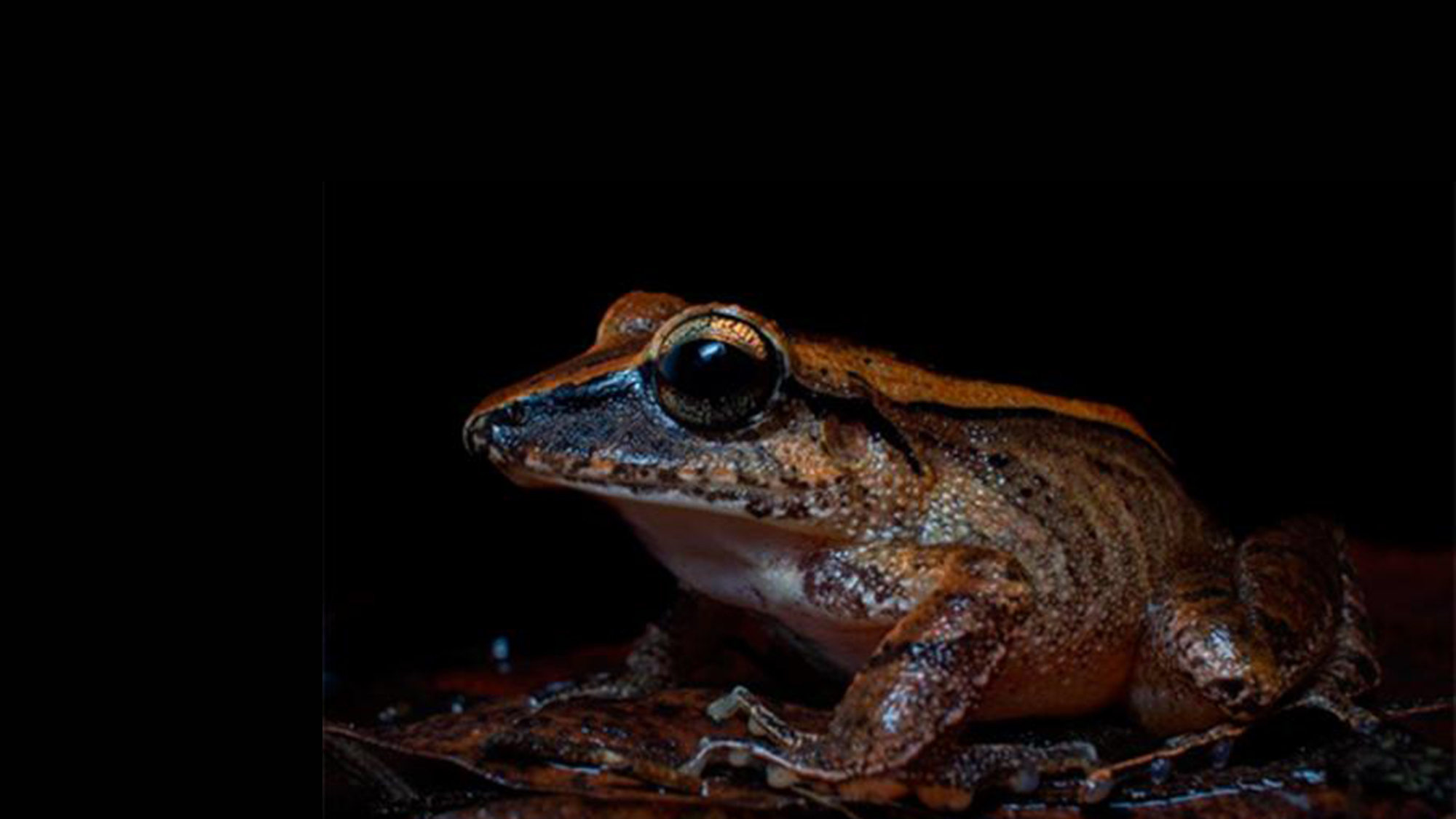

Amphibians are known for their bright colors and their low and bellowing croaks that often announce when it is going to rain. Other frogs may make sounds that humans can’t even hear. These sounds are also potentially pretty violent. A study published April 4 in the journal Acta Ethologica describes how some amphibians in South America potentially emit sounds on the ultrasound spectrum to defend themselves against predators.
Ultrasound in nature are sounds that are created at an ear-piercingly high frequency that is inaudible to the human ear. Humans can’t hear frequencies over 20 kilohertz (kHz). Ultrasound is used by some marine mammals, bats, and rodents for communication and to locate food. Some amphibian predators can also emit and hear sounds at this frequency.
“One of our hypotheses is that the distress call is addressed to some of these, but it could also be the case that the broad frequency band is generalist in the sense that it’s supposed to scare as many predators as possible,” Ubiratã Ferreira Souza, a study co-author and ecologist at the State University of Campinas’s Institute of Biology (IB-UNICAMP) in São Paulo, Brazil, said in a statement.
[Related: New proto-amphibian species named after Kermit the Frog.]
Another hypothesis is that this amphibian scream is meant to draw another animal to attack the predator threatening the amphibian. The leaf litter frog (Haddadus binotatus) that lives in the Brazilian Atlantic Rainforest deploys this sonic tactic against potential predators, including bats, rodents, some snakes, and small primates.
In the study, a team of researchers recorded the amphibian’s distress call on two separate occasions. They used software to analyze the sound and found that it had a 7 kHz to 44 kHz.
When emitting the distress call, the leaf litter frog makes a series of movements that are similar to defense positions. The frog raises the front of its body, opens up its mouth, and jerks its head backwards. It then will partially close its mouth and send out a sound that ranges from audible to humans (7 kHZ to 20 kHz) to an ultrasound band (20 kHz to 44 kHz) that humans can’t hear.
“In light of the fact that amphibian diversity in Brazil is the highest in the world, with more than 2,000 species described, it wouldn’t be surprising to find that other frogs also emit sounds at these frequencies,” said study co-author and IB-UNICAMP PhD student Mariana Retuci Pontes said in a statement.
Pontes may have discovered the use of this sonic strategy by another species accidentally. In January 2023, pontes saw a rock and an animal that was likely a Hensel’s big-headed frog (Ischnocnema henselii) in the Upper Ribeira State Tourism Park in Iporanga, São Paulo. When she tried to take a photo of the frog, she held it by the hind legs and found that the defensive moment and distress call was similar to the leaf litter frog. Pontes also noticed that a landhead pit viper (Bothrops jararaca) was only a few feet away, which she believes confirms that this behavior is a response to predators. While Pontes was able to record a video, she couldn’t analyze the sound to confirm if ultrasound bands were created.
[Related: These clams use poop to dominate their habitat.]
“Both species live in leaf litter, are similar in size [between 1.8 and 2.3 inches], and have similar predators, so it’s possible that I. henselii also uses this distress call with ultrasound to defend itself against natural enemies,” study co-author and IB-UNICAMP zoologist Luís Felipe Toledo said in a statement.
Researchers have also obtained recording of ultrasound calls by three Asian amphibian species, but the frequencies are used for communication between species and its not known if they are deployed when a predator is around
The team plans to address the numerous questions that arose from this discovery. These include which predators are sensitive to the frog’s distress call, how these other animals react to it, and if the call is intended to scare them or attract their natural enemies.
